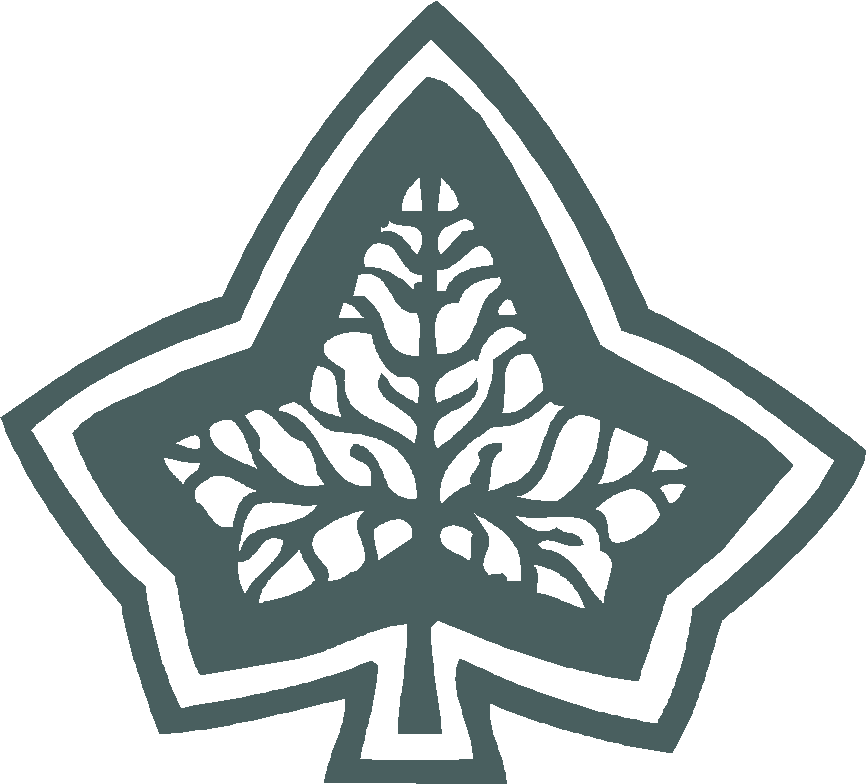
Nature
The surface area of Viidumäe Nature Reserve is relatively small, but it is still a home for many plant, fungal, and animal species. The ancient coastal terrace divides the area into two completely different parts. The drier areas above the terrace are divided by low beach ridges and dunes. The area lower than the terrace is wetter due to the spring waters and also cut through by past coastal landforms.
The alternating landscape causes differences in the conditions of the local temperatures, light, soil and humidity. This makes the nature reserve that has a mild maritime climate especially rich in species. 750 different vascular plants, about 60 of them protected, have been found on the reserve. Over 230 species of lichen and moss are known to grow there. About 700 species of fungus have been counted. More than 675 species of macrolepidoptera, over 200 species of spiders and 21 species of ants are known to inhabit the reserve. These numbers are growing because new species are constantly being found. At the same time, many biotic groups are still waiting to be researched.
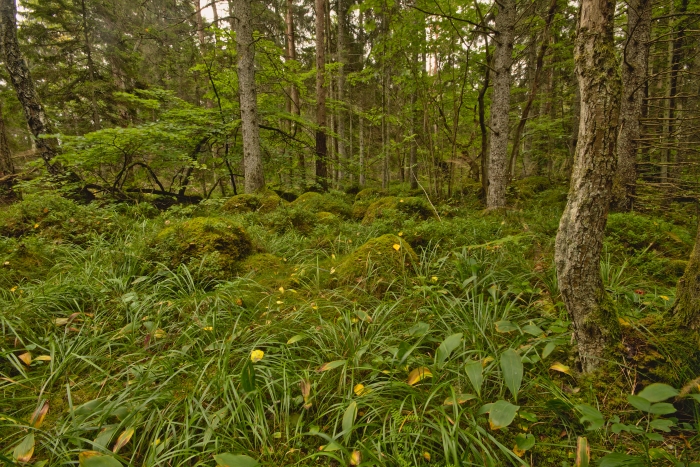
Boulder field in Viidumäe forest. Photo: Allar Liiv
FORESTS
About 85% of territory of Viidumäe is covered with forest. The dominant tree species nearly everywhere is pine. Many different forest types from coniferous forests with tall pines to peatland, alvar- and nemoral-like forests. Stocky oaks grow sporadically in the undergrowth of the pine forests of Viidumäe. Such pine forests with oaks are considered here as relic forests that were more prevalent during a warmer climate period in the past.
Many rare plant species of Viidumäe forests prefer dry and light habitats: glades and kettle holes, grassy verges of forest roads and forest rides, terrace slopes. Plants of steppe origin, such as the hairy milk-vetch (Oxytropis pilosa) and Kashubian vetch (Vicia cassubica) are found here, the pale St. John’s wort (Hypericum montanum), Alpine clover (Trifolium alpestre), European crab apple (Malus sylvestris) and rock whitebeam (Sorbus rupicola) grow on more fertile soil. Red helleborine (Cephalanthera rubra) is found in half-shadowed dry pine forests and dwarf rattlesnake plantain (Goodyera repens) in mesotrophic forests. Shadier forests are preferred as a habitat by English ivy (Hedera helix), wood fescue (Festuca altissima), lesser hairy brome (Bromus benekenii) and wild garlic (Allium ursinum).
.jpg)
Tawny owl (Strix aluco). Photo: Karl Jakob Toplaan
Bird species characteristic to Viidumäe pine forests are the stock dove (Columba oenas), black woodpecker (Dryocopus martius) and mistle thrush (Turdus viscivorus), white-tailed eagles (Haliaeëtus albicilla) have found suitable nesting spots in the old pine forests. Temperate broadleaf and mixed forests provide habitats for the black stork (Ciconia nigra), boreal owl (Aegolius funereus), Eurasian pygmy owl (Glaucidium passerinum), tawny owl (Strix aluco), lesser spotted woodpecker (Dendrocopos minor) and many other forest species. Oftentimes, badgers and signs of their presence, but also the largest animals in our forests – elks (Alces alces), red deer (Cervus elaphus) and wild boars (Sus scrofa) can be encountered.
SWAMPS
Swamps cover approximately 10% of the area of the nature reserve. They are situated in the region of springs below the terrace and in the kettle holes on top of the terrace. The main species of the undergrowth of the swamps are the brown bog-rush (Schoenus ferrugineus), and small sedges (Carex). Protected species such as the swamp sawgrass (Cladium mariscus), sweetgale (Myrica gale) and marsh helleborine (Epipactis palustris) can also be found in the swamps. Viidumäe swamps are a habitat for the common crane (Grus grus), moor frogs (Rana arvalis) and European toads (Bufo bufo) breed in shallow swamp puddles, the rare European medicinal leech (Hirudo medicinalis) also lives here.
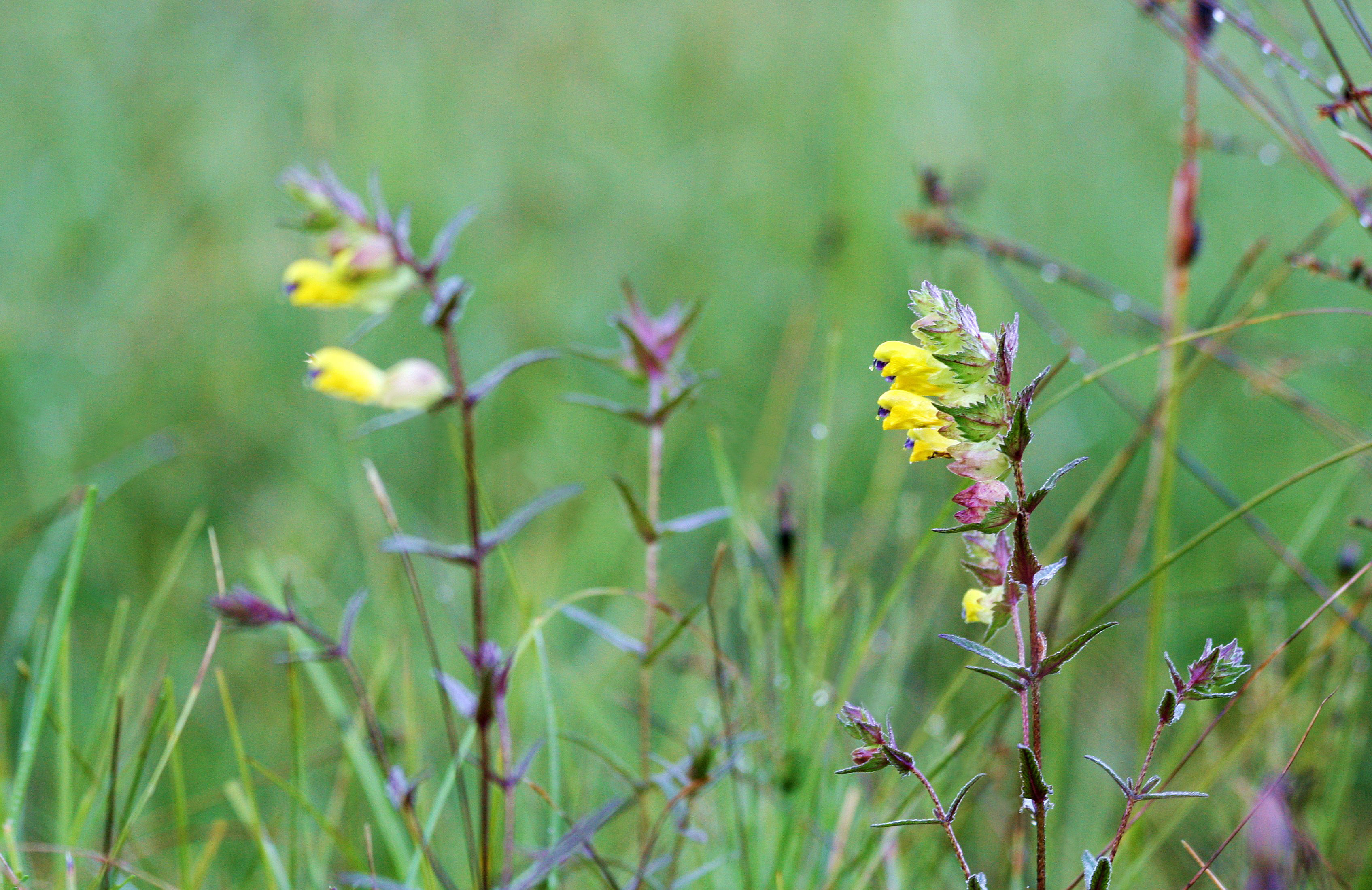
Saaremaa yellow rattle (Rhinanthus osiliensis). Photo: Maris Sepp
Spring fens below the terrace have formed due to the influence of the numerous springs originating from the base of the terrace. Viidumäe spring fens are especially known for the rarities living in their characteristic habitats. The most known is the Saaremaa yellow rattle (Rhinanthus osiliensis) – an endemic plant species only found in Western Saaremaa that was discovered by Bernhard Saarsoo, a botanist and physician, in 1933.
MEADOWS
Meadows form a small part of Viidumäe Nature Reserve that is mostly covered with forests and swamps. Nevertheless, meadows diversify the habitat conditions remarkably and enrich the biota with both common and rare species. The habitation of the small pasque flower (Pulsatilla pratensis) is in the dry juniper forests on pastures while the spring vetch (Vicia lathyroides) that is rare in Estonia can be found in the skirts of the meadow and fallow. The Siberian iris (Iris sibirica) and many orchids grow in wet meadows and brushes. Different butterflies, including many protected species such as the marsh fritillary (Euphydryas aurinia) and scarce heath (Coenonympha hero) can be encountered in the meadows and wooded meadows of Viidumäe.
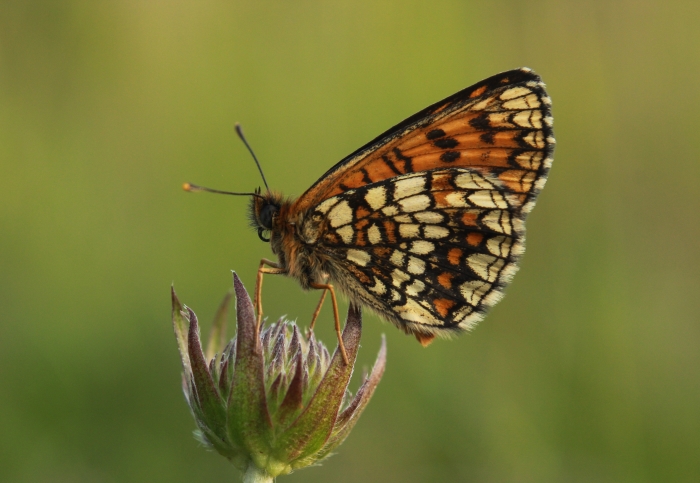
Heath fritillary (Melitaea athalia). Photo: Maris Sepp
WOODED MEADOWS
Traditionally managed wooded meadows have always been an inseparable part of the landscape of Saaremaa. In Viidumäe, Laasma and Mäepea wooded meadows have been maintained for many years and Upsi wooded meadow since 2002. The preservation of these park-like forest meadows demands constant maintenance: mowing, brush cutting, trimming and thinning trees and bushes. The maintained area of the wooded meadows in Viidumäe is slightly over 8 hectares. Several species of orchids grow in the wooded meadows, among others orchids with the largest flowers in Estonia, such as the lady’s-slipper orchid (Cypripedium calceolus) and narrow-leaved helleborine (Cephalanthera longifolia). 67 different vascular plant species per square meter of the wooded meadow have been counted. Wooded meadows are the favourite habitat for many protected bumblebees (Bombus).
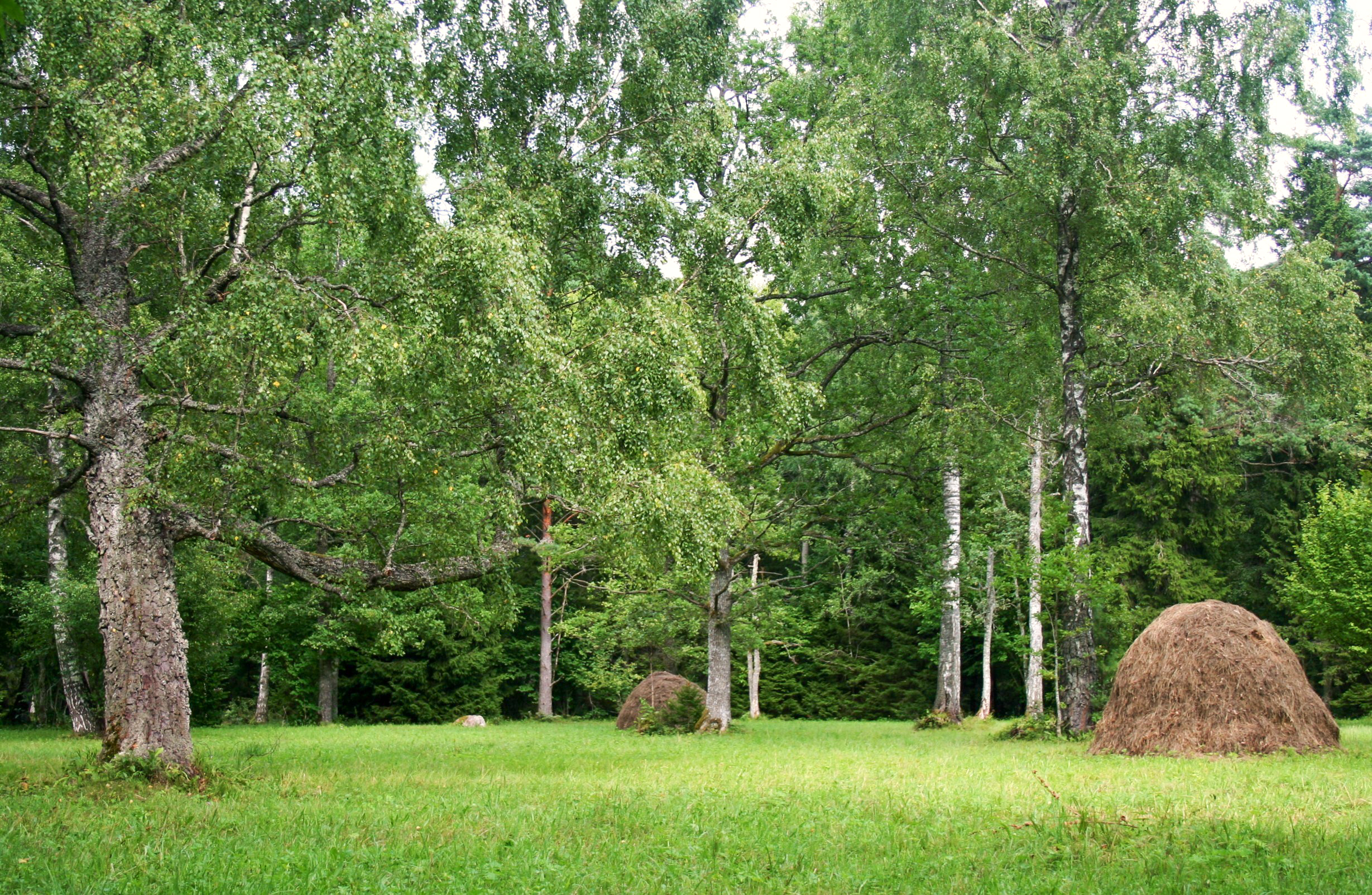
Mäepea wooded meadow. Photo: Maris Sepp